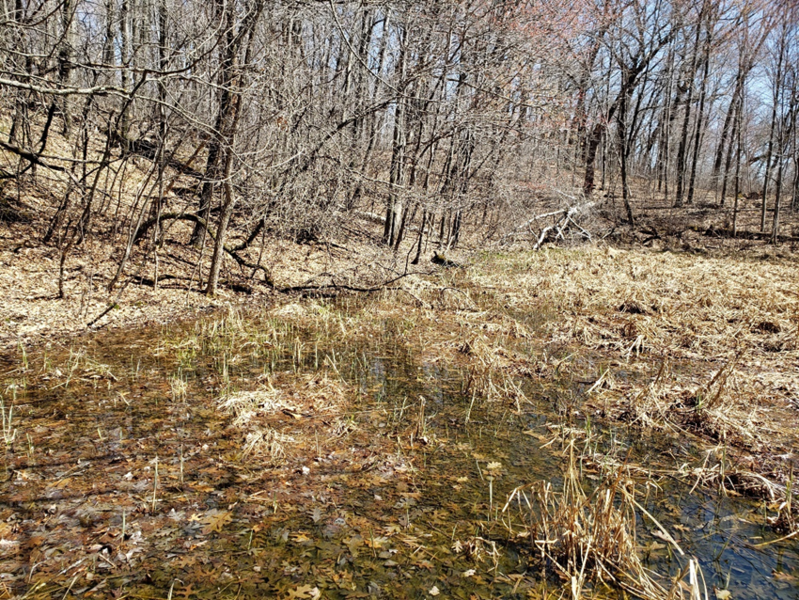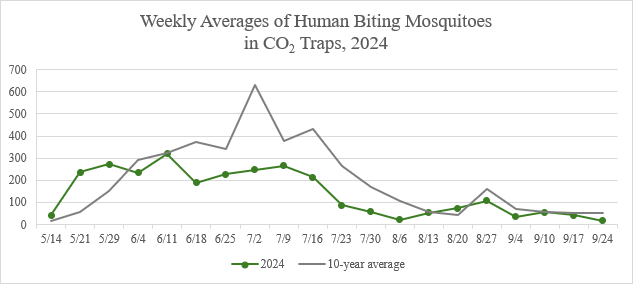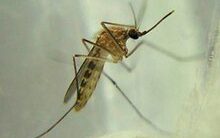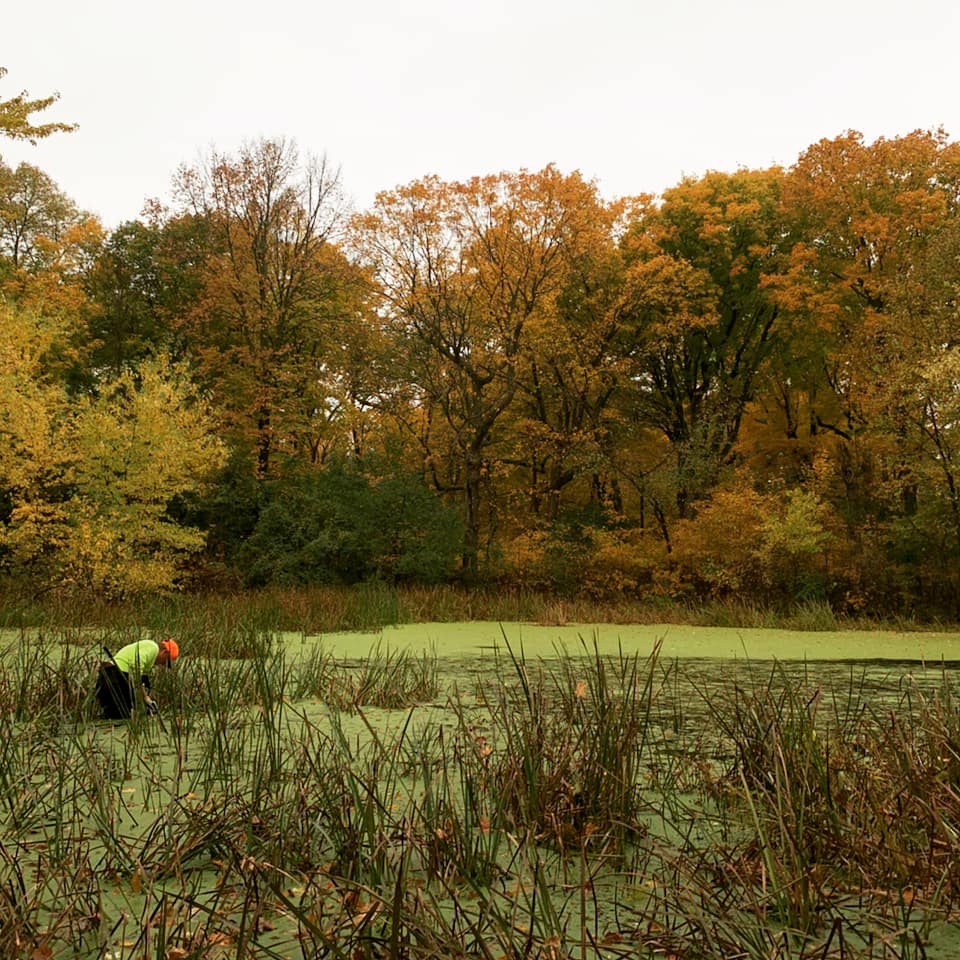
Metropolitan Mosquito Control District 2024 Season Highlights
December 11, 2024
Spring Update – Mid-Summer Surge in Mosquitoes May be Coming in 2025
March 27, 2025Minnesota has around 20 species of human-biting mosquitoes, many of which have different peak activity times and preferred habitats.
In this post, we'll take you through a few groups and species of mosquitoes in Minnesota and what exactly they're doing, month-by-month. (As well as what MMCD is doing to make summer weather enjoyable for Twin Cities residents!)
January-February: New Year, Same Mosquitoes
In the bitter months of a new year, we Minnesotans always have something to appreciate: no mosquitoes! While we shelter inside from freezing temperatures, mosquitoes are in their own sort of hibernation, called diapause. Whether as an egg, a larva, or an adult, mosquitoes spend their winters in a rest period, halting their development and waiting — like many of us — for warmer weather.
Check out our blog post about how different mosquito species spend the winter months.
March-April: Mosquito Madness Begins
As the snow melts and temperatures rise, the first mosquitoes we’ll see will be the Spring Aedes. Of the dozen or so species that comprise this group, all of them spend the Minnesota winter as eggs in habitats such as woodland pools or marshes. When temperatures exceed ~39 degrees Fahrenheit, spring Aedes eggs hatch. After several weeks, the hatched larvae will pupate and emerge, becoming the first brood of mosquitoes to torment Minnesotans.

A typical Minnesota woodland pool.
In tandem with these developing larvae, MMCD seasonal staff begin the hunt to find where the larvae are located. Near the end of April, Coquillettidia perturbans, or cattail mosquitoes, are older larvae, having hatched the previous fall. In response, MMCD helicopters begin treating cattail marshes to reduce populations in the coming months, the time when they will be most active.
May: I Have Some Rain?
As warmer temperatures become the norm and rainfall arrives, a new group of mosquitoes becomes active. The summer floodwater mosquitoes, having overwintered as eggs, will hatch after the first rainfall of the season. These mosquitoes take around a week to mature into adults. With every rainfall exceeding an inch, a new brood of summer floodwater mosquitoes will hatch and emerge.
It is at this time that our seasonal staff are busiest. Between checking weekly traps, delivering samples to the lab, and picking up tires, our field staff are chasing down larvae throughout the Metropolitan area and treating wetlands, all in the hopes that fewer adult mosquitoes will be buzzing around.
June-July: Fun, Fireworks, and Flying Pests

Adult mosquito numbers, measured by our weekly Monday night surveillance. Notice the spike at the beginning of July, which depicts the high numbers of Culex we usually see at that time.
Mid-June, the Spring Aedes, having laid their eggs, begin to die out. Meanwhile, floodwater mosquitoes continue to buzz about, and two new pests come to town. Cattail mosquitoes start to come out for their once-a-year brood, peaking around the 4th of July. Luckily, after the holiday passes, the adult cattail mosquitoes will begin to decline in numbers. However, any females who have found bloodmeal will lay their eggs, preparing for next year. Culex mosquitoes, specifically Culex restuans, begin to grow in numbers. Culex mosquitoes feed almost exclusively on birds but will bite humans if the opportunity arises.
August: There's an Arbovirus About

Culex pipiens.
As the summer progresses, Culex restuans decrease in numbers and Culex pipiens reach their peak in mid-August. Due to these mosquitoes’ large numbers, August becomes the time of year where people are most at risk to contract West Nile Virus.
Elsewhere in the marshes, cattail mosquito eggs hatch into larvae. These wrigglers won’t become adult mosquitoes until next summer; for now, they will remain dormant, using a specialized air tube to puncture the cattail stem and take in oxygen.

An MMCD staff in a cattail marsh while leaves turn in the background.
September-October: Winding Down, Winding Through the Cattails
As the season changes over and the sun loses its height in the sky, summer floodwater mosquito eggs go into a state of dormancy, or "diapause". Though they may be stragglers, most adult mosquitoes have either died or seeking a place to hibernate. Goodbye mosquito season!
While mosquito numbers are dwindling, MMCD staff head out to cattail marshes to check for larvae in preparation for next year’s brood. The young cattail larvae are hard to find amongst the deep and thick cattails, but staff endeavor to reduce populations of one of Minnesota’s most aggressive mosquitoes.
November-December: There's Snow Mosquitoes Anymore
At long last, we Minnesotans are free of buzzing and mosquito bites for the year. In the long and cold winter months, the Spring Aedes and summer floodwater mosquitoes bide their time as eggs. Adult Culex mosquitoes search out barns, caves, and any other warm habitat to wait out the next season. Cattail mosquitoes remain as larvae, hiding in the depths of the marshes.
Counting Down the Days...
The cold days, though mosquito-free, may seem long. We here at MMCD are striking out the days on our calendars until we face our annual pests. As you dream of summer days, consider working for us! Our seasonal staff applications open soon; join us to scour wetlands or identify mosquitoes in the lab (or even join our PR team!)





